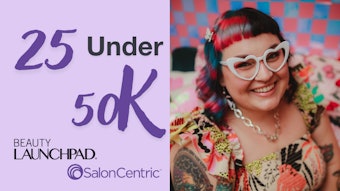
It’s common for many salons and spas to have a commission- based pay structure, where salon workers receive commission pay only (no salary), usually 20 to 50 percent of gross receipts. However, states like California are beginning to make this pay structure obsolete with restrictions for independent contractors. Even if you don’t live in California, many businesses struggle with their payroll structure and maintaining profitability. Take Pasadena, California-based Integrity Lash, for example. After six years in business, they had a very busy salon with six lash stylists, all booked one to two months out. “Our salon was busy, but we weren’t profitable,” says Paul Leubbers, who oversees business operations at Integrity Lash. “We had the appearance of a very successful salon on the outside, but internally we were losing $4,000 to $8,000 each month and had no idea how to stop the train wreck. We were bleeding cash.”
While taking the commission or booth renter route may feel more comfortable, it also may not be the best option. “There are lots of owners out there who would make more money if they were a commissioned employee in their own salon,” says Neil Ducoff, founder and CEO of Strategies, a business consulting company for the spa and salon industry. Team-based pay (TBP) is an alternate pay structure that has gained popularity in the salon industry. In essence, it’s an hourly or annual salary system (that may incorporate raises and bonuses) that’s tied to overall staff goals. Instead of focusing on individual numbers, the staff works collectively toward a greater good. “With TBP, the emphasis moves from the individual to the team,” explains Leubbers. Once employees are paid hourly, some of the worry over sales is alleviated. “Then it becomes the salon’s job to effectively sell those hours and keep payroll at a manageable level,” says Ducoff.
RELATED: How to Effectively Boost Business by Selling Aftercare Products
Need a real-world example? Leubbers explains how things changed when he incorporated TBP into Integrity Lash: “With a commission or booth rental system, it’s difficult to ask someone to do anything more than just lashes—because the staff members only get paid when they’re doing lashes. When we were running the business with a commission-only structure, my team would complain about things like doing a free touch-up on another artist’s client, folding towels, and mandatory team meetings or training. Basically, if we asked them to do anything else, we were asking them to work for free. Of course, they would refuse to help. Why should anyone work for free?
“Now, every month, we set a realistic financial goal (retail and service sales) that we aim to make as a team. If we hit it, the whole team gets a bonus. Plus, our staff members know that they’ll be paid for every minute they’re in the salon doing anything. They get paid when a client no-shows, when they sit in a team meeting, take a break or help clean the salon.”
RELATED: 8 Must-Try Marketing Tips From Vogue Brow Academy
While there are pros for incorporating team-based pay, such as increasing productivity and allowing owners to control their payroll expense percentage, there are also cons. Less motivated employees may simply collect a paycheck thanks to the hard work of other salon workers. As a result, there can be a drop-off of some of your most ambitious artists. Ultimately, most experts recommend a structure that incorporates both salary and incentive pay. In order to determine the best method for your business, though, it’s imperative that you understand your numbers, i.e. gross receipts, retail sales, etc. Unfortunately for many salon owners, this is difficult. “Creating a budget and sticking with it used to be mostly guesswork [for us],” admits Leubbers. There are plenty of software systems available that can help track numbers more efficiently. Then you can decide the salary you can afford to pay your staff, as well as additional add-on incentives to keep performance high to maintain a lucrative salon business.
Time to Check In
Paul Leubbers, head of business operations for Integrity Lash, found that team-based pay organized the salon’s expenses and rejuvenated the business overall. Look at the questions below; if you answer “no” to most of them, then it might be time to incorporate a new pay structure into your business.
- Can you accurately predict how much revenue you will generate each month?
- Do you know how to create a budget and stick to it?
- Do you know what it costs you per hour to do a service?
- Do you know what benchmarks to aim for when it comes to tracking the health of your lash salon?
- Does your team pitch in to do any other things besides applying lashes?
- Do you know when you should raise your prices or hire a new team member?
- Do you know how to communicate effectively with your team?
- Do you know how to create a culture where your team will love work?
- Do you know how to create systems that will optimize your business?
This story first appeared in the January/February issue of Eyelash magazine. To receive the magazine, click here to subscribe.
[Image: Getty Images]











